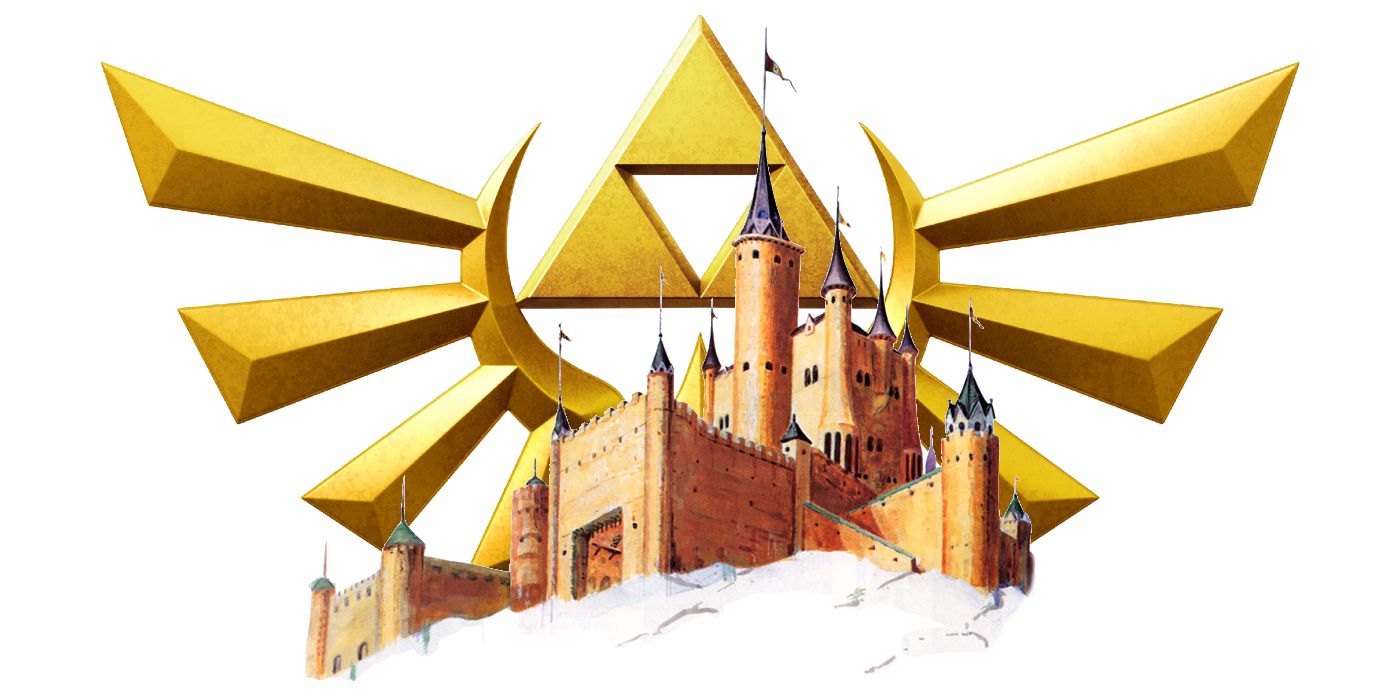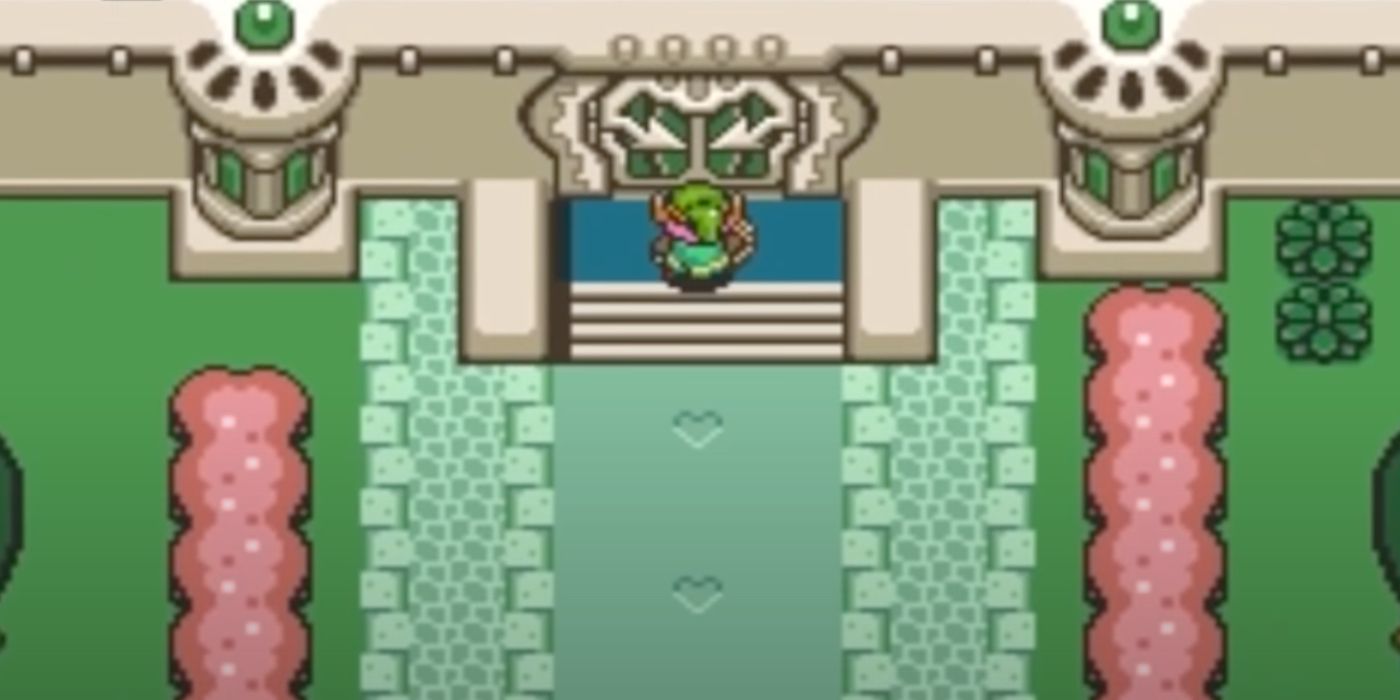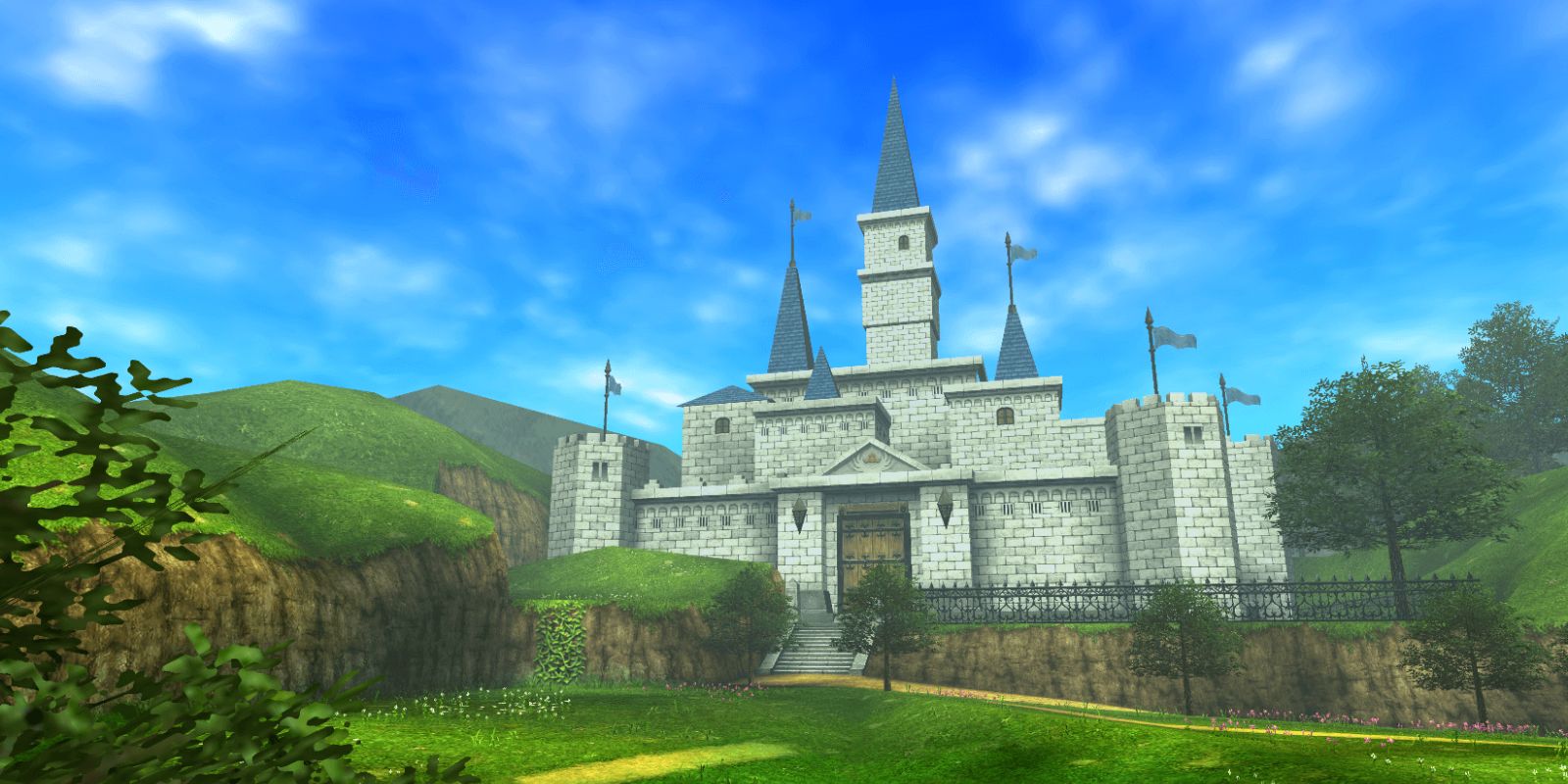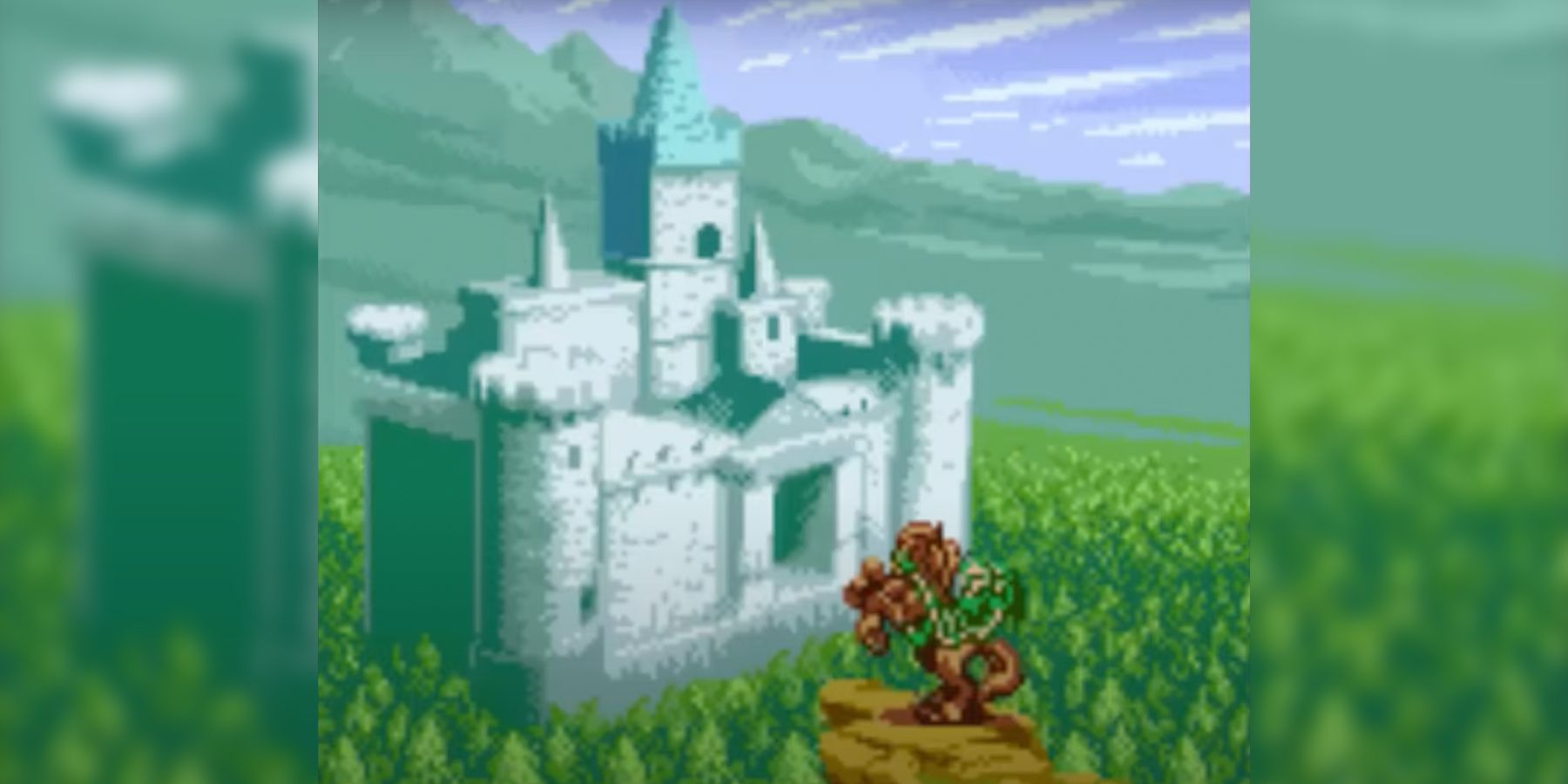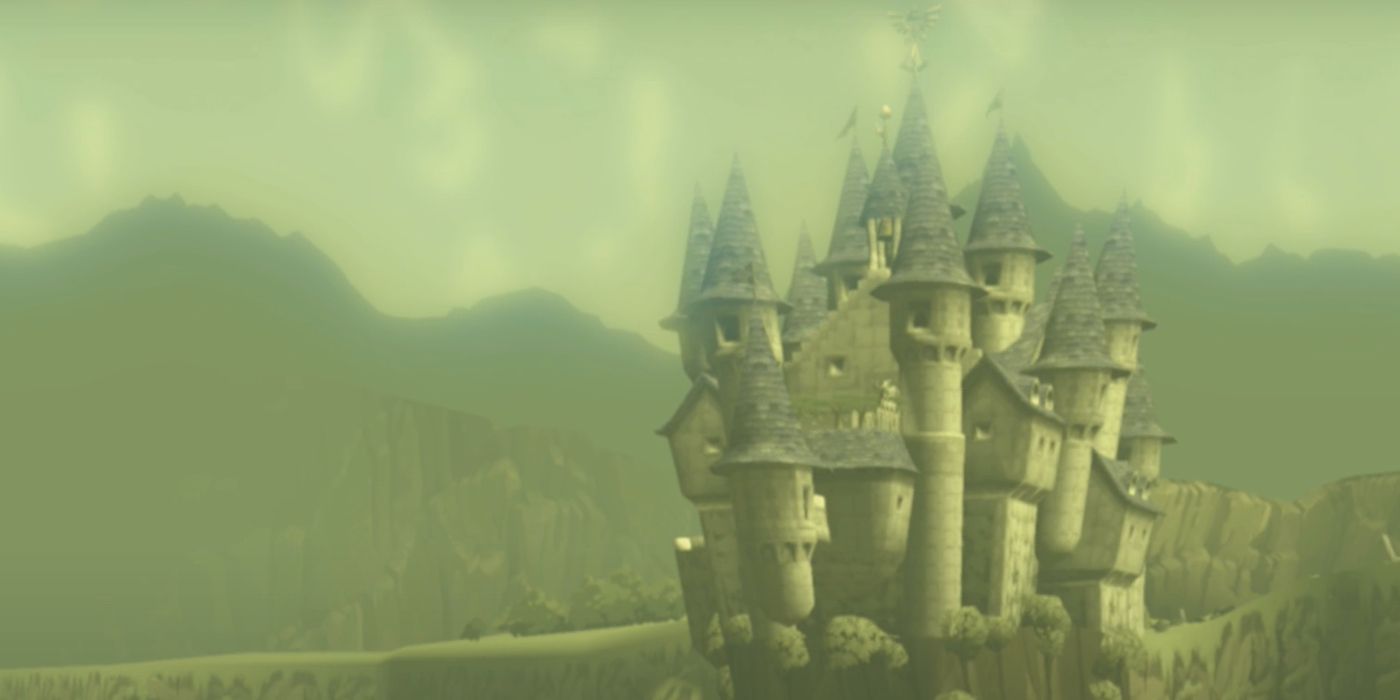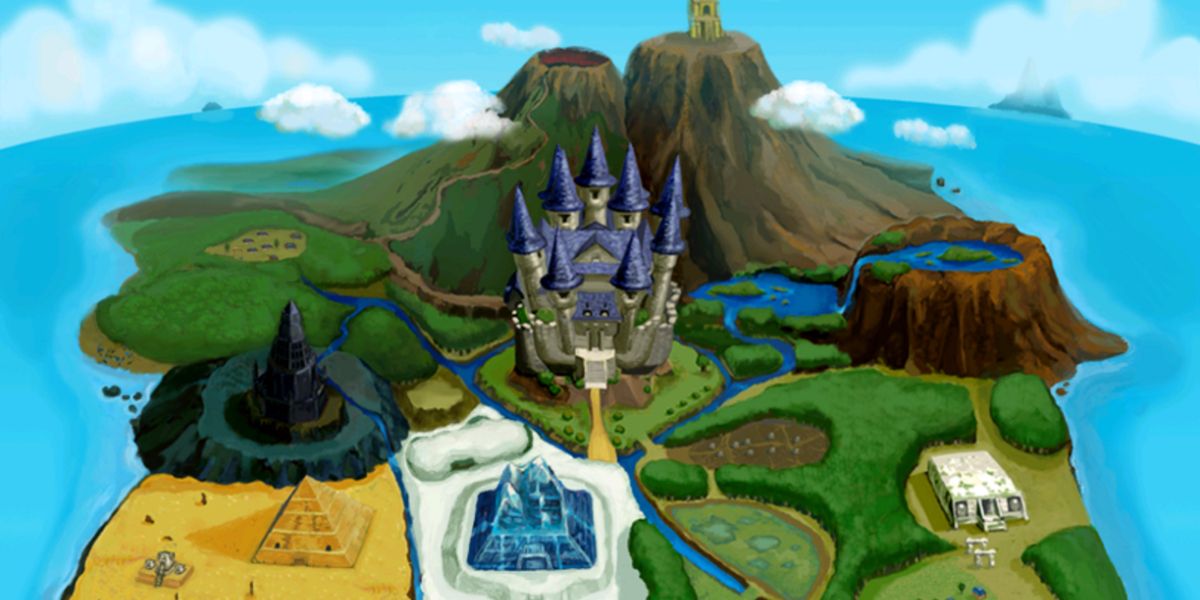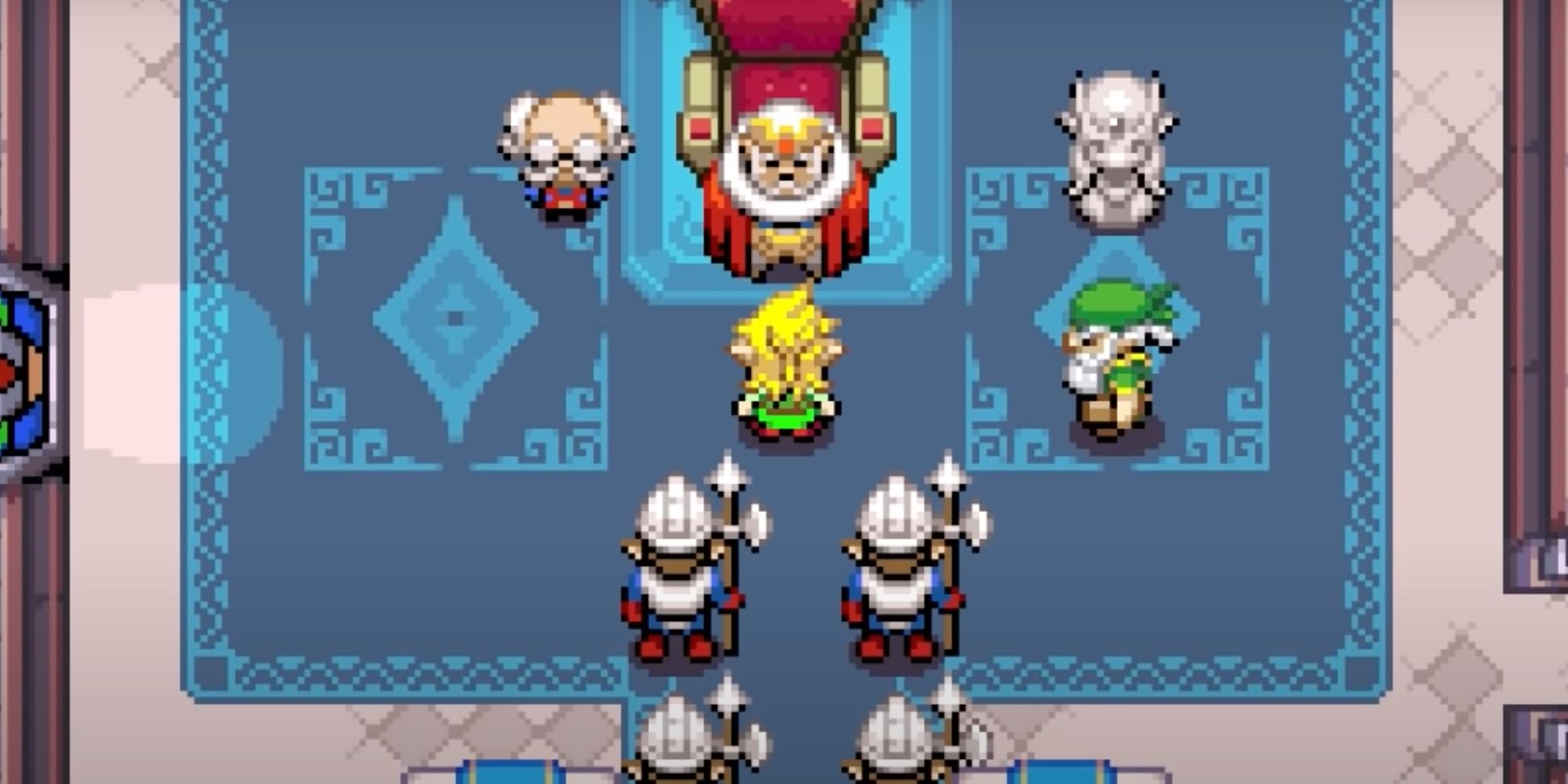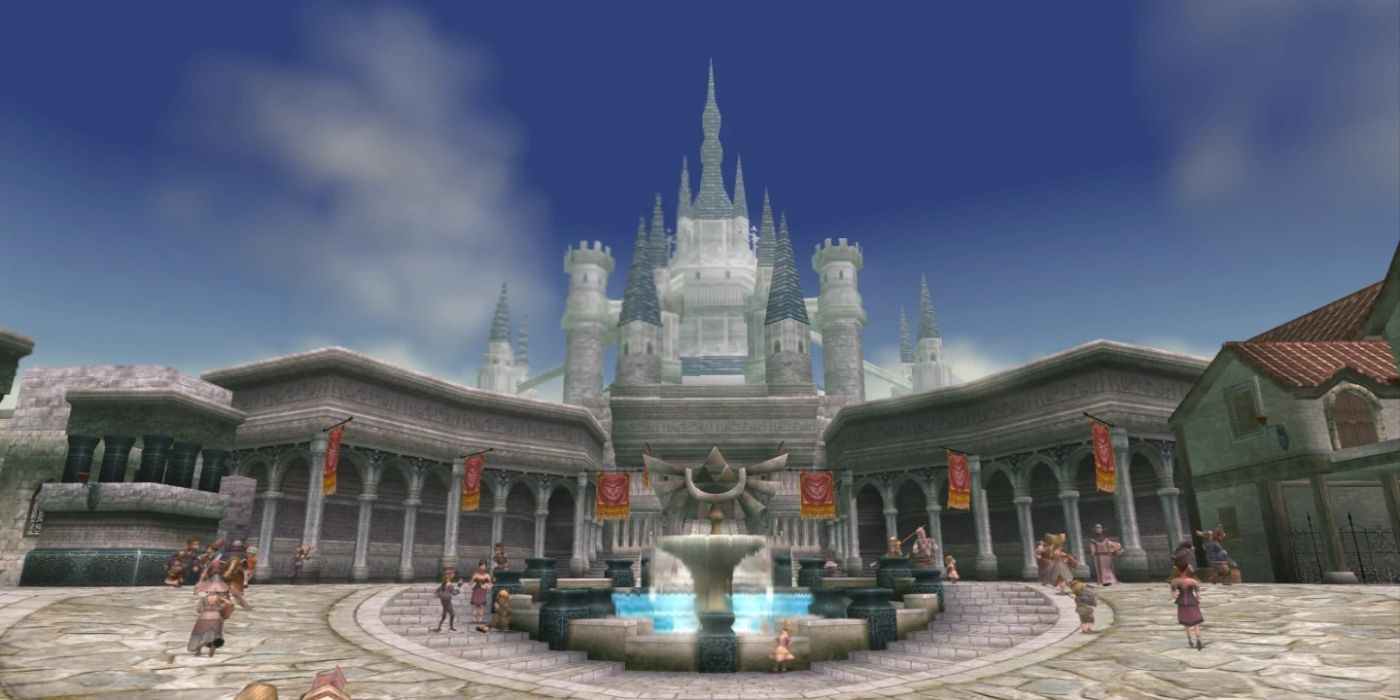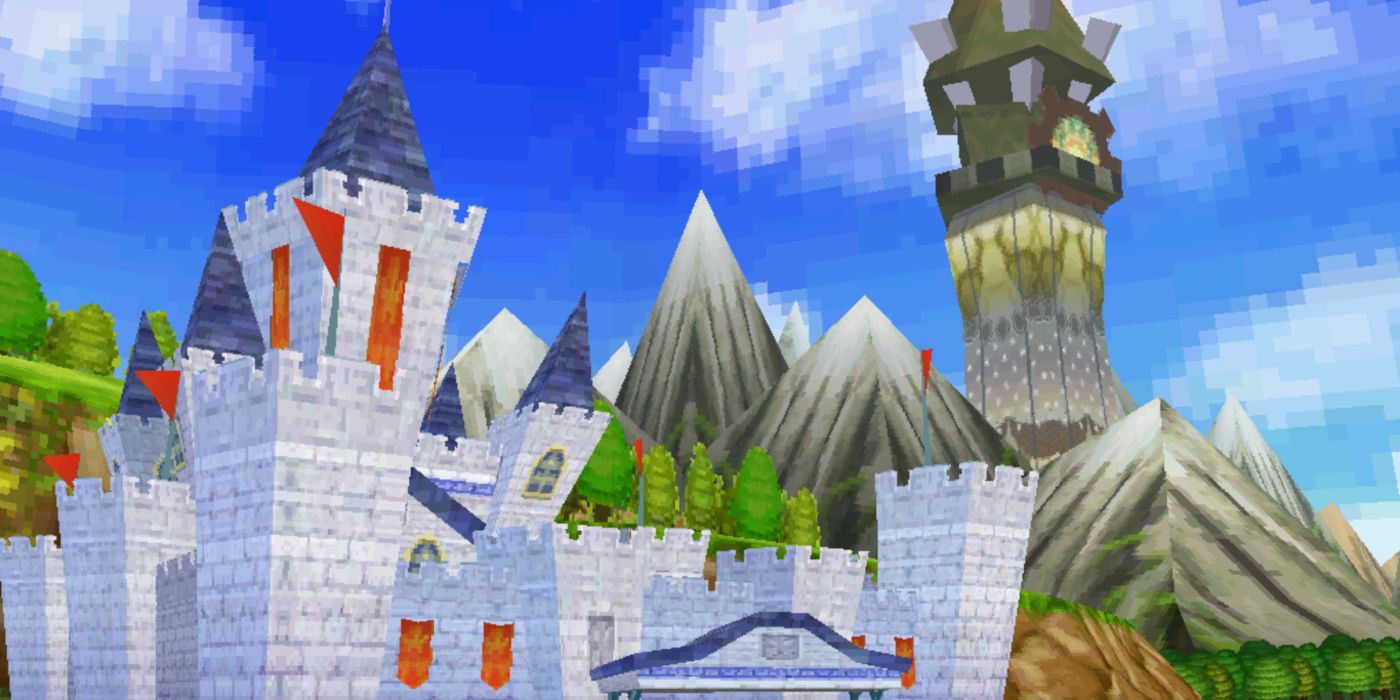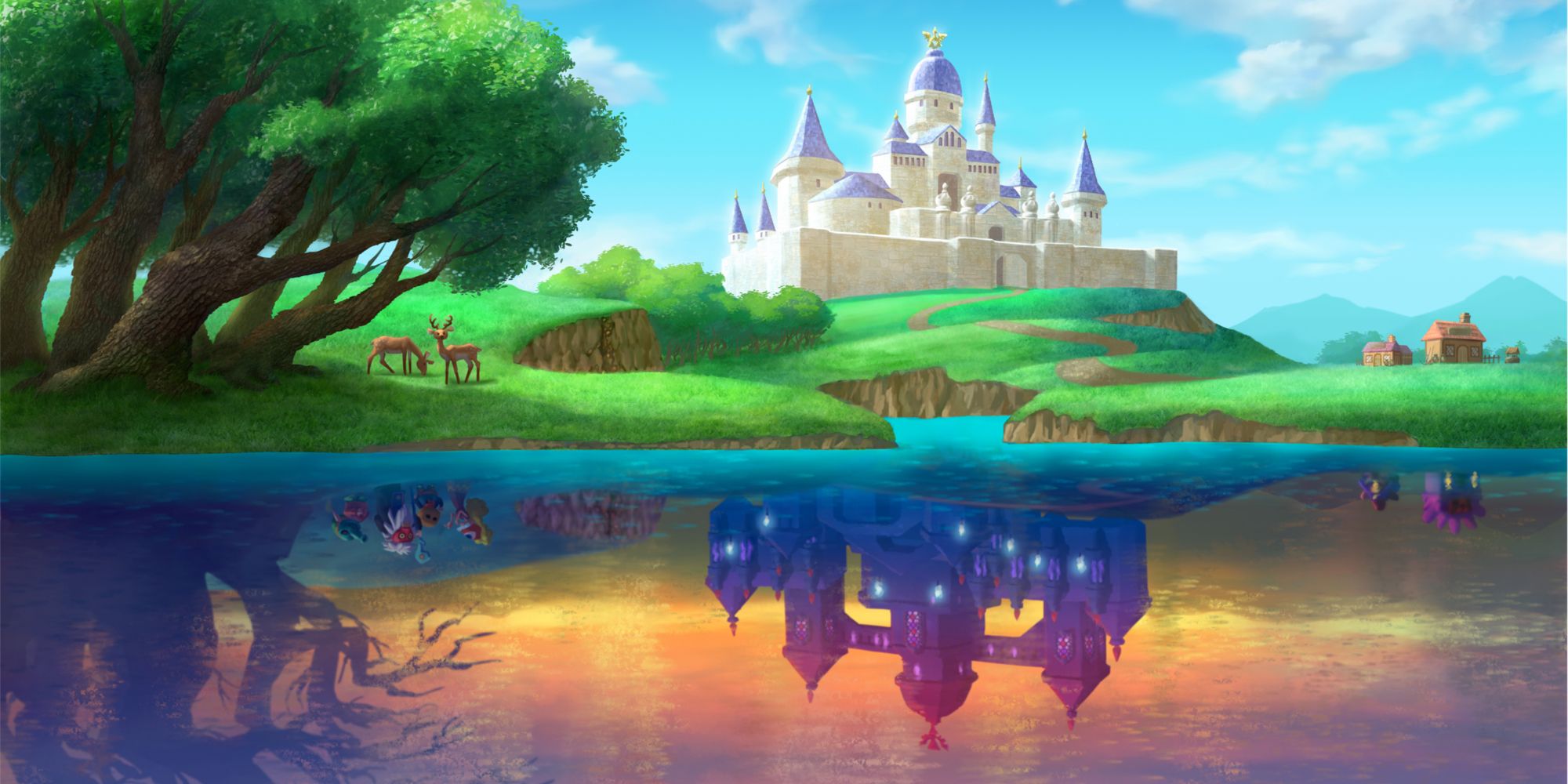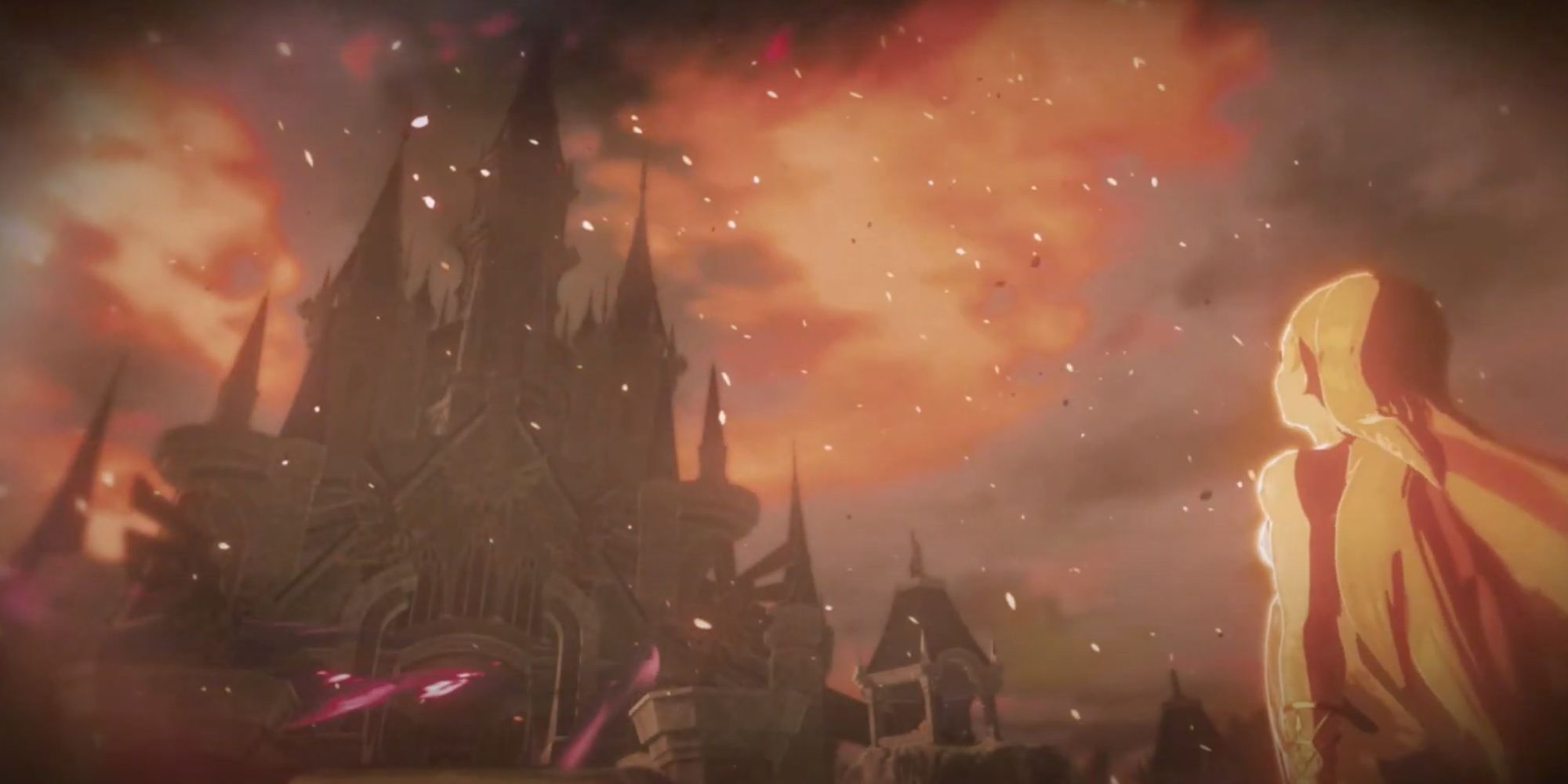One of the most frequently recurring locations in The Legend of Zelda is the iconic Hyrule Castle, home to the royal family and seat of the Hyrulean monarchy. As a symbol of power, and a monument representing the kingdom of Hyrule itself, the castle is frequently targeted and conquered by Ganon or subjected to some other magical phenomenon as part of his plot. Even in Zelda games where Ganon isn't the main villain, Hyrule Castle is sometimes plunged into crisis. Despite the extremely varied art design throughout the series, Hyrule Castle has remained surprisingly consistent in its aesthetic and architecture.
Although it's one of many locations practically synonymous with the series, Hyrule Castle doesn't actually appear in the original The Legend of Zelda. Very few named locations actually appear in the first game, with even the dungeons just being numbered labyrinths. Even though Hyrule is named in the original's instruction booklet, the actual game world hardly depicts an actual kingdom, more or less containing only monster-filled tracts of wilderness without many prominent landmarks. Notable exceptions are The Legend of Zelda's Lake Hylia, Death Mountain, and Spectacle Rock.
The first stronghold resembling Hyrule Caste - both in appearance and spirit - is the North Castle in Zelda II: The Adventure of Link. This is the location in which the player starts the game; it houses the slumbering Princess Zelda, and is where Impa sends Link on his quest to obtain the Triforce. Nintendo's instruction booklet for Zelda II shows North Castle with noticeably different features than what Hyrule Castle would eventually have, namely brownish bronze roofing instead of royal blue. The non-canon Zelda animated TV series from 1989, which is loosely based on the first two games, does show the North Castle with blue roofing, which may have influenced future designs of Hyrule Castle.
Hyrule Castle First Appeared In A Link To The Past
The Super Nintendo classic was the first game to feature a proper Hyrule Castle. It is just one of A Link To The Past's many dungeons, and is one of the first locations visited in the game. Link is telepathically summoned to the castle by Princess Zelda, who has been captured by the wizard Agahnim. In a secret passage leading into the castle dungeon, Link finds his uncle on the brink of death, who relinquishes their family's sword and shield to the boy. Link rescues Zelda for the time being, and begins his quest to stop Agahnim. Link later returns to Hyrule Castle to fight Agahnim before being sent to the Dark World, where Ganon's Pyramid of Power is its counterpart in the center of the map.
The visual design of Hyrule Castle in A Link to the Past is rather unremarkable, and lacks the conical tower roofs that would come to be typical of the structure in later games, a companion quirk to Link having pink hair in Zelda: ALttP. Its layout is rather basic, with a square outer wall and a large courtyard. In-game it looks more like an ancient ziggurat than a more traditional medieval castle. Artwork for the game (such as the image at the top of this page) depicts a more classically styled Hyrule Castle for A Link to the Past - steep walls, towers with pointed roofs, and a footprint built according to the terrain it rests on, rather than the in-game square.
Ocarina Of Time Featured The First 3D Hyrule Castle
With The Legend of Zelda making the jump to genuine three dimensional graphics in Ocarina of Time, so too did Hyrule Castle become a more tangible, believable fortress. It rests on a hill above Castle Town (although the even higher reaches surrounding the castle are an obvious flaw in what should be a defensible position), has a seemingly sturdy gate with parapets lining the facade, and is surrounded by a moat. Its condition suggests it held fast during the civil war prior to Ocarina of Time where it likely served as the command center for the Hyrulean loyalist forces, but Link - as a child - managed to infiltrate it through a duct.
The interior sections of Hyrule Castle in Ocarina of time, or at least those seen by the player, are primarily comprised of lush gardens and courtyards. Guards are stationed at specific locations outside the castle, but they actively patrol the interior because of a man trying to sneak in to see Princess Zelda, according to hearsay in Castle Town. Sneaking through the gardens is the only time Link visits the castle proper in the game, because it is overtaken and transformed into Ganon's Castle while Link was locked away in the Sacred Realm after pulling the Master Sword from its pedestal. Ganon's Castle completely transforms the landscape surrounding Hyrule Castle, and floats above a pool of lava, making it inaccessible until the Sages create a bridge for Link.
Hyrule Castle Briefly Appears In Oracle Of Ages/Seasons
Hyrule Castle only makes a very short appearance in both Oracle of Ages and Oracle of Seasons during their intro cutscenes. Both games primarily take place in other regions - Labrynna for Ages, and Holodrum for Seasons - so Hyrule Castle is never visited. As pictured above, Hyrule Castle in the Oracle games appears to be surrounded by a dense forest, making it look exceptionally large compared to its previous depictions.
The Wind Waker's Hyrule Castle Is Frozen In Time
Once Link has proven himself in the Tower of the Gods, The Wind Waker's King of Red Lions takes him below the surface of the Great Sea to Hyrule Castle. It's been suspended in time, seemingly a protection against the flood that was called by the Golden Goddesses to drown Hyrule when a hero failed to appear in opposition of Ganondorf's return. Time only begins to pass in Hyrule Castle when Link removes the Master Sword from its pedestal in the basement, bringing back the submerged world's color. This is a notable change from previous (and future) games, where the Master Sword is usually in a separate, often sacred location.
Because of the flood, it's difficult to say exactly how Hyrule Castle looked in its prime. In its current state, it occupies an outcropping of rock, connected to the steep shore of a lake by a bridge. Matching the famously controversial cel-shading in The Wind Waker's art design, as well as the architecture of the game's other buildings, this version of Hyrule Castle is exceptionally fantastical. There are multiple pointed towers, all clustered and leaning outward, but the player only gets to explore the main hall and basement.
Hyrule Castle Is A Recurring Level In Four Swords Adventures
Adapting The Wind Waker's signature art style for a top-down game, Four Swords Adventures has a Hyrule Castle that is very similar to WW's. Like many 2D Zelda games, FSA's Hyrule Castle is placed right in the middle of the map (exaggerated in size alongside all the other dungeons above). The castle is visited twice during gameplay, and is reminiscent of the same locale in A Link to the Past, only much larger with courtyards out front, and a robust, traditional Zelda dungeon layout inside. In another parallel with The Wind Waker, Four Swords Adventures' Hyrule Castle houses the Four Sword, the pedestal for which is sealing away Vaati before Link removes the weapon.
Vaati Takes Over Hyrule Castle In The Minish Cap
Before The Legend of Zelda's timeline splits, The Minish Cap occurs chronologically ahead of Four Swords Adventures, and tells of Vaati's origin. Like some of the other 2D games, The Minish Cap doesn't offer a great view of Hyrule Castle, but it does play a central role. The Picori Festival sword-fighting tournament's award ceremony is held on the castle's grounds, where the winner is allowed to touch the Picori Blade, which is thrust into the Bound Chest like a pedestal. As the winner, Vaati takes the opportunity to shatter the Picori Blade and unleash the evil power within the Bound Chest.
Link is sent on a quest to reforge the Picori Blade, which eventually becomes the White Sword, and later the Four Sword. The Four Sword has magic powers like Zelda's Master Sword, and will eventually be used to seal away Vaati. Hyrule Castle is returned to multiple times throughout The Minish Cap because it's the location of the Elemental Sanctuary, where the White Sword is infused with elemental powers to become the Four Sword. Vaati eventually turns it into Dark Hyrule Castle, The Minish Cap's final dungeon.
Hyrule Castle Is Nearly Destroyed In Twilight Princess
When it released in 2006, Twilight Princess had by far the most grand iteration of Hyrule Castle. It dwarfs the nearby Castle Town and can be seen from afar in many parts of Hyrule. The main structure is completely surrounded by courtyards, and the interior is identically massive to its outward appearance. Twilight Princess feels slow getting started, but ends on an extremely high note with Hyrule Castle as its final dungeon. The wealth and regalia of the Hyrulean royal family is on display as Link fights through the lavishly furnished halls.
For a majority of the game, Hyrule Castle is under the control of Zant, King of Twilight, though he is not the main boss fought there. Zant was merely serving Ganondorf, who confronts Link and Midna in the castle's throne room. After defeating Puppet Zelda and Dark Beast Ganon, Midna dons the Fused Shadow in an attempt to finish the Demon King. Link and Zelda are transported to Hyrule field and witness a massive explosion engulf the castle. It can't be seen in the final cutscenes, where Midna's true form is revealed in Twilight Princess, but Hyrule Castle does reappear during the game's credits.
A New Hyrule Castle Is Built For Spirit Tracks
Following the events of The Wind Waker and Phantom Hourglass, a continent was discovered and a new kingdom of Hyrule was established. The royal family once again took up residence and ran the government from a castle named after the kingdom. Likely due to the DS's limited graphical capabilities, Spirit Tracks' Hyrule Castle is more square than its Wind Waker predecessor, but still clearly takes inspiration, as evidenced by its outward leaning walls.
Shortly after the beginning of Spirit Tracks, Chancellor Cole takes control of Hyrule Castle after separating Zelda's spirit from her body. Even though Spirit Tracks isn't technically one of The Legend of Zelda's direct sequels because it takes place 100 years after Phantom Hourglass, this Zelda is a descendant of Tetra, who is honored with a stained glass window in this new Hyrule Castle. The Chancellor is in the midst of a plot to release Demon King Malladus, and effectively makes Link an enemy of the state. Despite this, the player can still explore Hyrule Castle quite thoroughly thanks to the Recruit Uniform (the iconic green hat and tunic) that lets Link blend in with the castle guards.
Hyrule Castle's Walls Are Explorable In A Link Between Worlds
Since A Link Between Worlds is an indirect sequel and spiritual successor to A Link to the Past, its Hyrule Castle is very similar to its predecessor's, and may be the exact same building since the two games take place on the same branch of The Legend of Zelda's confusing timeline. Since the games involve different inverted realms, the otherworldly counterpart to ALBW's Hyrule Castle is Lorule Castle, not a reinvention of Ganon's Pyramid of Power. The two Hyrule Castles look almost identical from a top down view on their respective maps, but even though ALBW borrows ALttP's square foundation for the castle, its top half is noticeably influenced by more recent depictions.
The biggest change in ALBW's Hyrule Castle comes from its unique gameplay mechanics. After confronting Yuga in the Eastern Palace, Link gets the ability to merge with walls. The interior layout of Hyrule Castle is unique in ALBW, but players also get an interesting view of the castle's rooms thanks to the camera shift that takes place when Link flattens himself onto a wall.
Breath Of The Wild's Hyrule Castle Is Infected By Calamity Ganon
The Hyrule Castle in Breath of the Wild is perhaps the only iteration to surpass the scope of that in Twilight Princess. Even though Hyrule has been in ruins for 100 years when BOTW begins, Hyrule Castle still towers over the rubble of Castle Town. Link's recovered memories give an idea of the grandeur the castle once had, but during the game, it is always surrounded by the swirling malice of Calamity Ganon, who is in a deadlock with Princess Zelda trapped inside. BOTW's four Divine Beasts are impressive in their own way, but Hyrule Castle is the closest the game has to a traditional dungeon, letting players explore its Guardian-infested exterior and labyrinthine interior.
Breath of the Wild's Hyrule Castle is surrounded by a moat like many others, but it appears at least partially a natural feature, connecting to the surrounding rivers. It's perhaps most defensible than any of its counterparts due to its size, the large gate on the single bridge to its island, and the multiple gatehouses along the main route to the castle's entrance. Although BOTW 2's real title hasn't yet been revealed, the trailers show that this version of Hyrule Castle has been lifted into the air, where it may play a central role in the game again. The Legend of Zelda has been releasing games for decades, and Hyrule Castle has almost always - and will continue to be - an important location in each title.
Source: Zelda II Instruction Booklet (via Nintendo)

